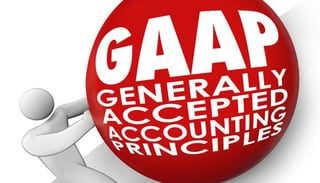I’ve been writing a lot lately about the new revenue recognition standards (created by ASC 606 and IFRS 15) companies will soon need to adopt to ensure compliance. Granted, it’s a complex and somewhat dry topic, but it’s one poised to have a tremendous impact on public and private companies alike. Since most of us aren’t accountants (full disclosure – I am, but not practicing), I thought it could be helpful to boil down the changes to the five core steps to compliance.
ensure compliance. Granted, it’s a complex and somewhat dry topic, but it’s one poised to have a tremendous impact on public and private companies alike. Since most of us aren’t accountants (full disclosure – I am, but not practicing), I thought it could be helpful to boil down the changes to the five core steps to compliance.
1. Identify the contract with the customer
If it meets all of these criteria, it’s considered a contract:
- The parties have approved it
- The goods and/or services involved are clearly identified
- The payment terms are spelled out
- There is commercial value to the contract – meaning there’s money involved
- It is probable that you will collect the payment
2. Identify the performance obligations in the contract
A performance obligation (think of it as a deliverable, even though that’s legacy guidance [ASC 605] terminology) under the new standard is a promise within the contract to transfer a good or service to your customer. You can bundle distinct goods or services together within the contract, or the goods or services could be in series, as long as they are substantially similar and delivered in the same way.
3. Determine the transaction price
Now this one sounds pretty obvious, right? And for most of us, it is. Your contract states a price your customer will pay for the products and services you spell out. However, things can get pretty tricky, though, when you factor in work performed on a time and material basis, financing considerations, performance bonuses, penalties or rebates.
4. Allocate the transaction price to the performance obligations
If your contract stipulates more than one performance obligation (deliverable), you are obligated to allocate a separate price to each one. The standards spell out in detailed fashion how you should go about determining a transaction price, and how to handle complicating factors such as discounts, variable consideration, and change orders.
5. Recognize revenue when you satisfy a promise
The new revenue recognition standards state that you shall recognize revenue when you satisfy a performance obligation by transferring the promised goods or services to your customer. Determining just when a service is transferred, however, is not always a straightforward task, especially if the services are performed over time. While the standards go into great detail regarding this step, it may ultimately prove the most challenging step for companies to get right.
The new revenue recognition standards are coming, and affected companies should begin preparing to meet them. The BTerrell Group is ready to help you take the necessary steps to ensure your organization is in compliance with the new mandates. Contact Brian Terrell for a free consultation.
By BTerrell Group, Intacct Partner based in Texas


